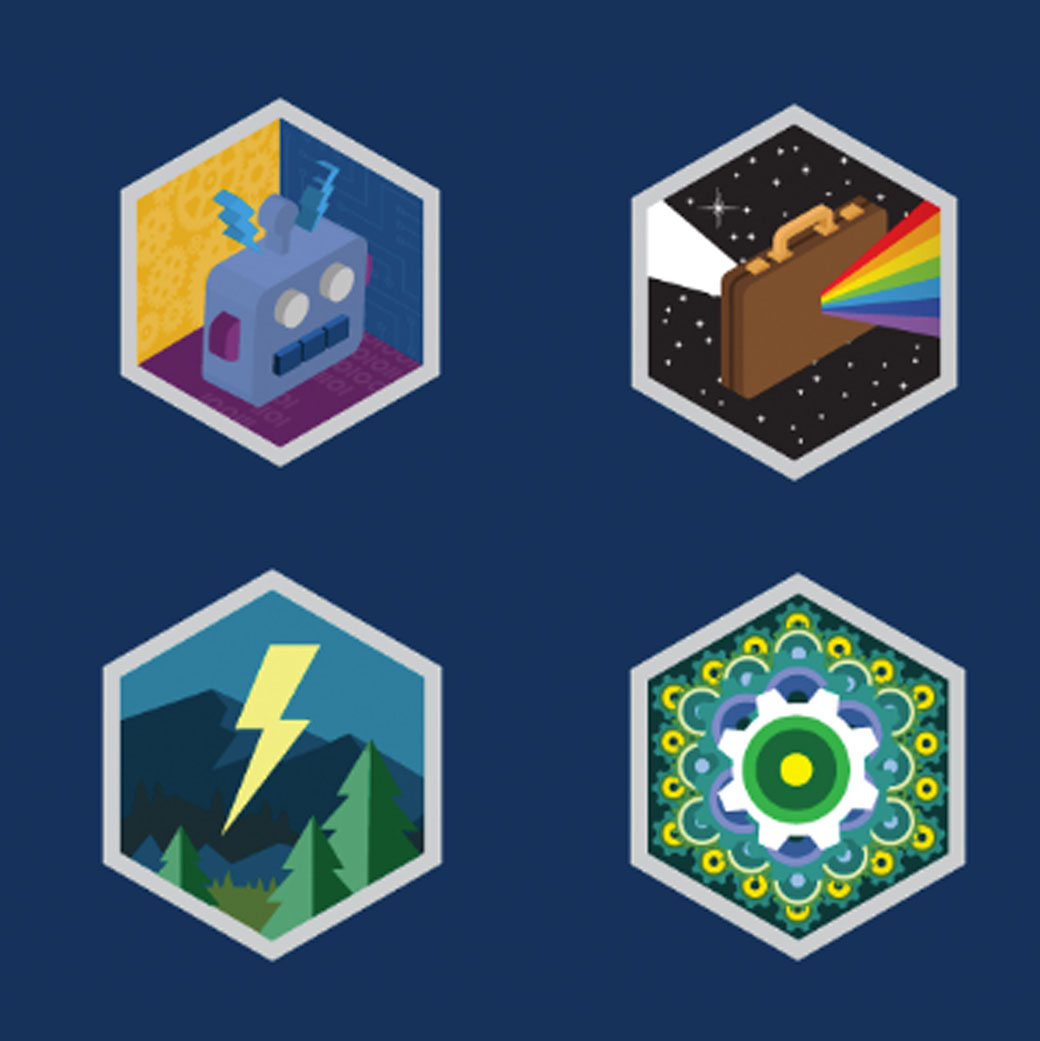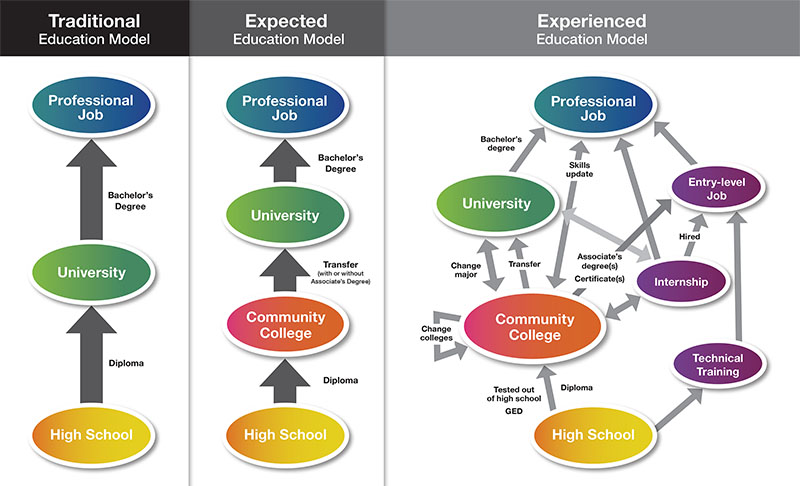Work Is Not the Enemy of Education: Let's Consider Stackable Credentials
By Louise Ann Lyon, PhD | May 31, 2018
Senior Research Associate, ETR
What comes first for young adults? Education? Or Work?
In this culture, we usually view education and work as sequential stages rather than part of a mutually enhancing cycle. Our ideal seems to be that secondary and post-secondary students need to focus on school and should not be working during the school year. At the same time, we expect education to give students skills they will need in the workplace.
Time for a New Paradigm
I am interested in a new paradigm: the premise that work and education enhance each other and both enhance the lives of individuals and society. In this paradigm, work and school are interleaved to maximize both motivation for and benefit from education.
I have a friend who teaches high school in a low-resourced school district. He once believed that high school students’ “job” was to do well in school. But at his school, students forced by family circumstances to work have a maturity and personal value for education that more privileged, non-working students do not.
He changed his mind about students working. He now thinks it is beneficial for high school students to work. He finds that working increases both students’ motivation at school and their non-academic skills, such as time management and personal responsibility.

I have other friends struggling with these issues. Some who come from privileged backgrounds worry that their kids lack motivation to do well in school. I have friends who despair of their sons, who only want to play video games while letting their schoolwork languish. Others have offspring who refuse to go to college because they don’t see the point, only to find once they are in the workplace that their job choices and functions are quite limited.
Broadening Participation
As an academic researcher, my focus has been on broadening participation in computer science. As part of this work, I’ve had the opportunity to interview faculty and students at community colleges and universities, students and curriculum developers at coding boot camps, industry hiring managers, and women who are administrators on the Salesforce platform who are teaching themselves to code. I’ve been fascinated to discover the many different learning pathways that lead to the workplace. Students’ expectations of post-secondary education go beyond academic learning, and their interest in learning continues after entering the workforce.
College is not simply about academics. It currently plays some roles that could also be filled through work. I’ve talked to faculty who believe college “matures” students by giving them skills such as time management and self-regulation. Yet students who must work to support themselves or their families learn these skills outside of college. Traditionally-aged community college students report that the school gives them a less expensive way to “try out” majors—a classic function of lower division classes.
I have also interviewed college graduates already in the workforce who enrolled in coding boot camps because they did not like their chosen field of study once they experienced it in the workplace. In fact, women who never even considered majoring in computer science in college report becoming interested in computing because they discovered in the workplace that it can be used in helping professions—a concept they were never exposed to in college.
Motivating Learners Through Credentials
This paradigm of interleaving work and education may offer a better learning experience for a range of diverse students. When interviewing community college students five years after they had been enrolled in introductory programming classes, I found that several had discontinued their college education after receiving credentials that allowed them to get jobs they enjoyed. Women who work as administrators on the Salesforce platform reported that not only did Salesforce badges allow them to apply for jobs requiring those skills, but the garnering of badges was satisfying in and of itself.
(Badges are markers that show completion of Salesforce-generated learning steps or modules. They can be included on resumes or professional social media sites to document specific areas of learning. Yes, they’re kind of like Girl Scout badges!)
 Based on what I have learned from friends and through interviewing those involved in education and learning, I have come to the opinion that perhaps education should be offered as a series short-term, periodic bursts interleaved with working.
Based on what I have learned from friends and through interviewing those involved in education and learning, I have come to the opinion that perhaps education should be offered as a series short-term, periodic bursts interleaved with working.
It seems to me that we already have a model for this paradigm: stackable credentials. These are focused credentials that can be accumulated over time, often in a sequence that relates to the work tasks an individual is facing in real time. They can be “stacked” to help move someone along an educational or career pathway. Learning and work are interleaved as workers build deeper skills and more competence.
If we begin to implement this model beginning in secondary school, we can create a cycle of hands-on practice and theory—the way people learn best. This would also foster just-in-time learning, where students learn what they need to know at the time they need to know it or use it. It would foster motivation, since students would see the reason for learning as well as have an earlier chance to “try out” fields before committing to an educational path.
It would also foster social justice in education, since students from a lower socioeconomic background could work to support themselves and their families between manageably short times in the educational system. Students who were forced to discontinue their schooling would have a documented record of the skills they had learned that would help them land a job.
Coming from a Learning Sciences background, I have always loved the idea of “lifelong learning,” and this new paradigm fosters an ease of everyone becoming “lifelong learners.” Credentialing would be acceptable for students of all ages and stages—we would move away from the idea that education is only for the young. It would also serve to encourage and legitimize alternative pathways for learning, both before entering and during time in the workforce. This would allow allowing options that serve people of different stages, characteristics, interests, and abilities to continually learn and grow.
Louise Ann Lyon, PhD, is a Senior Research Associate at ETR. She brings industry experience in the software engineering workplace together with a research background to her focus on diversifying technology at postsecondary institutions and in the workplace. She can be reached at louann.lyon@etr.org.






